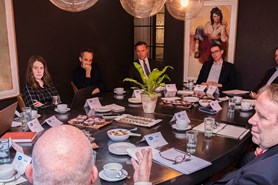As the sun set on COP27, there was a real danger that no agreement would be made and there would be no progress to show for 2 weeks of negotiations and horse trading between nations. When the draft final Implementation Plan was announced, it’s fair to say the delegates breathed a huge sigh of relief.
Let’s set this into a bit of context. The planet is dying. We have a global energy crisis. Russia’s attack on Ukraine continues to wreak damage, destruction and death. The world is reeling from 2 devastating years of Covid. Every global economy is teetering on the brink of recession.
With that backdrop, that there was movement on anything was nothing short of a miracle. The highlights were the new Loss and Damage fund: which will compensate vulnerable countries and small island states effected by climate change. A Global Climate Observing System was established, giving a commitment to develop a robust universal early warning system for the effects of extreme weather and climate change. In addition there was Adaptation Finance, a pledge to double the level of adaptation finance by 2025, and Multi-Lateral Development Banks – commitment to reform access processes and take more account of the debt burdens countries face.
Were these outputs enough from our world leaders? Undoubtedly nations affected by climate change need support. Funding structures for climate change mitigation activities should be revised to better benefit those vulnerable to climate threats and we need improved climate observation systems. But these issues should be addressed as well as, not instead of maintaining our collective focus on addressing the cause of climate change - how we will reduce greenhouse gas emissions? COP27 failed to deliver here in 2 main areas:
-
1.5oC: At the end of COP26 all countries agreed to revisit and strengthen their 2030 climate goals by the end of 2022 to keep the increase in global temperature below 1.5oC. Very few have improved and submitted their plans. Those plans which have been issued so far would reduce our global emissions by less than 1% of the 43% recommended by scientists. There was also an unsuccessful attempt to remove the ‘ratchet’ which sees goals increasing each year. A clause to propose ‘peak emissions’ in 2025 was, however, removed.
-
Fossil Fuels: COP26 in Glasgow concluded with a resolution to phase down the use of coal. India proposed going one step further at COP27 and phasing down the use of all fossil fuels. This attempt failed. Where the declaration called for provision to boost low emissions energy, the wording is so vague that this could include gas, which is still a major fossil fuel.
What does this mean for construction? Let’s not make the same mistakes as COP27
A recent Deloitte Crane survey reported only 54% of (developer) respondents in saying their developments would hit net zero targets after 2030, compared to 70% saying they would hit them before 2030 in the same period last year. This evidence of a softening on commitment to net zero is alarming (and familiar). What is causing some companies to retreat? Although we are seeing some clients taking huge strides towards net zero, many don’t know where or how to start. Others are facing stiff economic headwinds and a challenging business environment. Ironically much of this challenge is being exacerbated by not dealing with energy security and reliance on fossil fuels.
The business case for net zero is stronger than ever. Rising energy costs, mandatory reporting of climate risk on corporate balance sheets and the ever increasing amount of green finance looking to fund a sustainable future all present opportunities we cannot afford to miss. This is the time for our sector to go high on commitment to climate, not low. Where we lead, others will follow.
How can Gleeds help? As experts in areas such as carbon accounting, business case development, procurement strategy, investment cost benefits analysis and data analytics, Gleeds are already supporting our clients on their journey to net zero. Over the next 6 months, our experts will be sharing our latest thinking, approaches, tools and techniques on how to drive carbon reduction, via our new Gleeds Net Zero series. We’ll be sharing articles and video interviews on topics like funding, big energy, retrofit and more, that can help take you from inertia to action.
Look out for our article next month: Setting our clients up for success by Lucinda Seagrave. In the meantime, reach out to me, or any of our team for an exploratory net zero discussion.

Dave Wakelin
Director of Sustainability
- dave.wakelin@gleeds.com
- +44 (0) 7443 071 021



